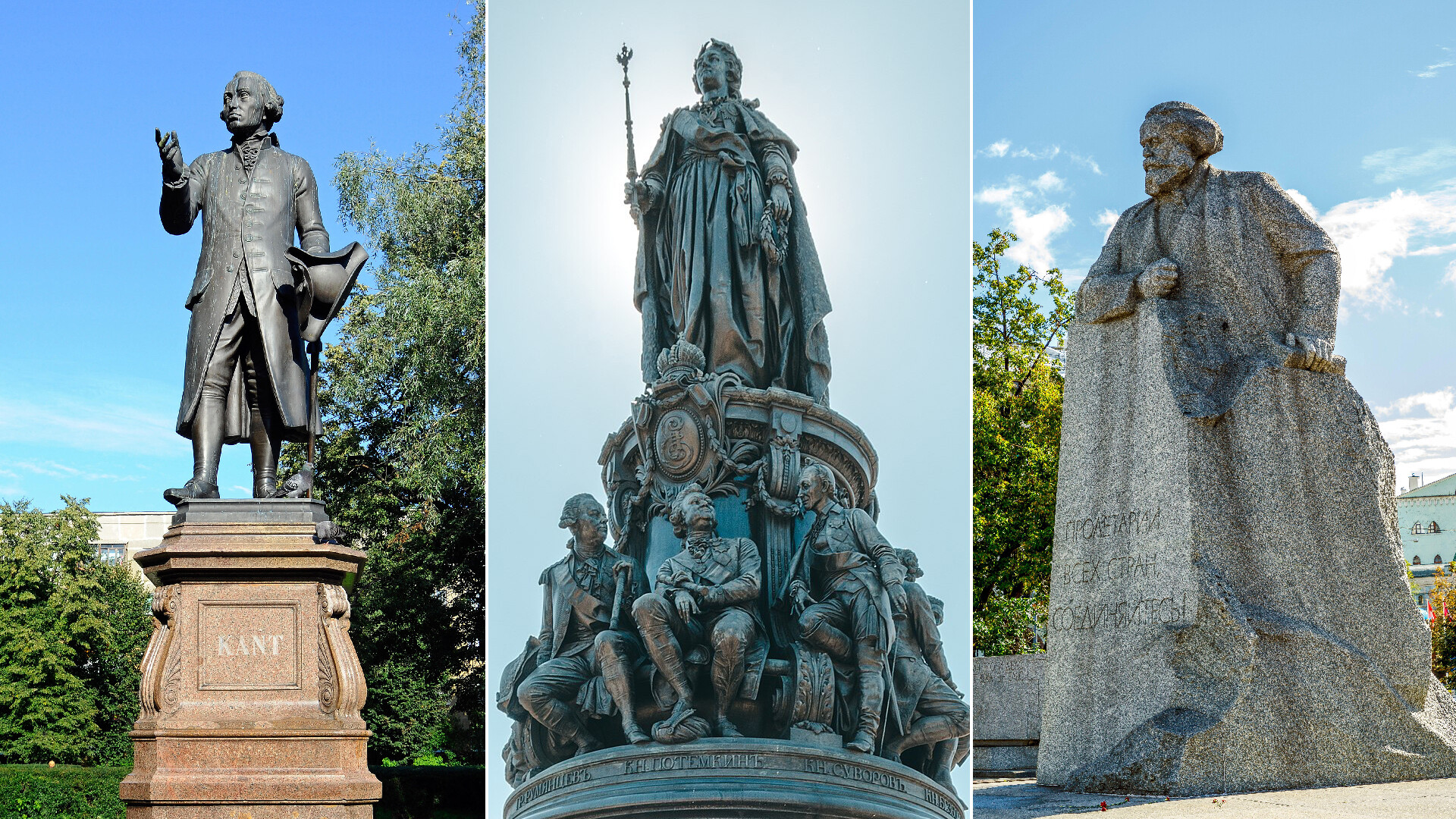

One of the founders of communism, Karl Heinrich Marx, is well known to every citizen of Russia. According to the Russian Ministry of Culture, the country has about 20 monuments to the author of one of the most important books in history, “Capital”. One such monument in honor of Marx is located in the very heart of Russia – on Theater Square in Moscow. Planned while Lenin was still alive, the monument was only unveiled 40 years after the foundation had been laid in 1961. The figure of Marx, leaning as if on a pulpit, is situated on a pedestal with the famous engraved slogan, “Workers of the world, Unite!”
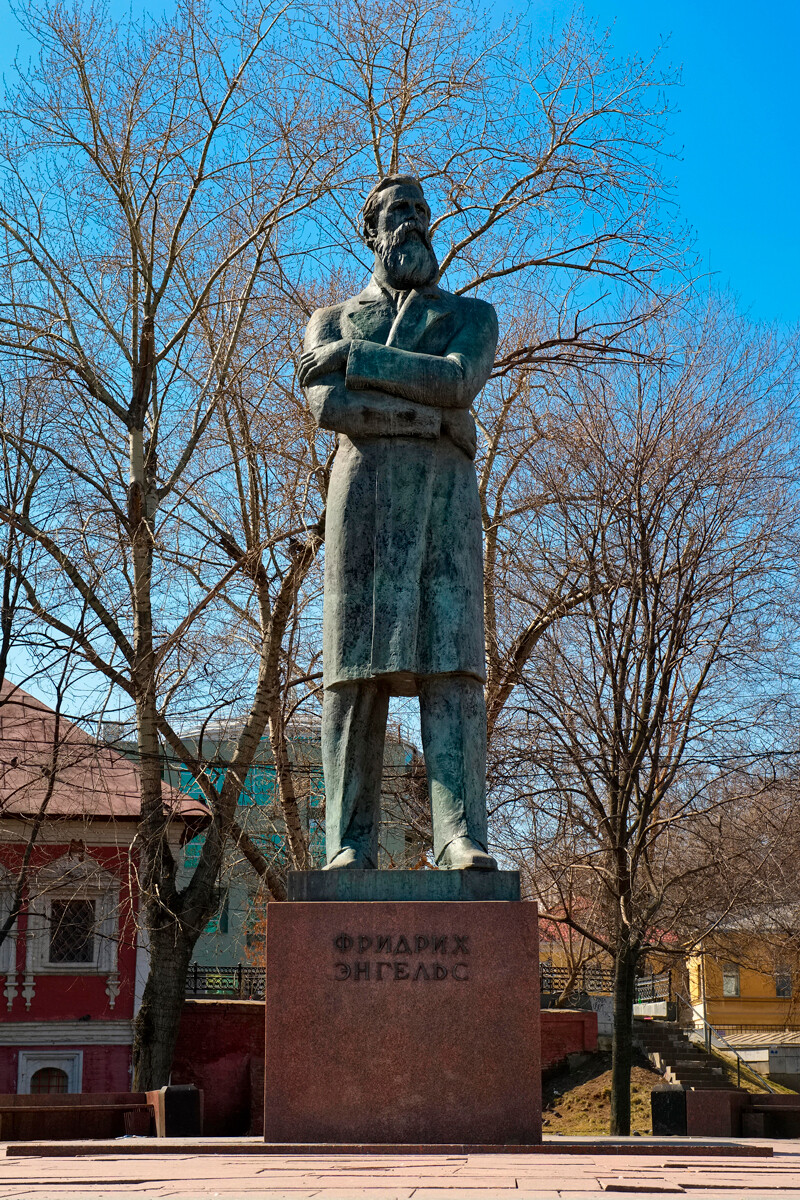
Sometimes the fathers of Marxism are depicted together in monuments that commemorate their mutual contribution to history and their close friendly relationship. However, Russia also has separate monuments to Engels. For example, a six-meter-tall bronze statue in full height adorns one of the parks in the center of Moscow. Another monument is located in the city that in fact bears the name of Engels. In St. Petersburg, the bust of the German political thinker is installed on the territory of Smolny Institute. However, opposite him, across the alley, the bust of his comrade, Karl Marx, is also perched on a pedestal.
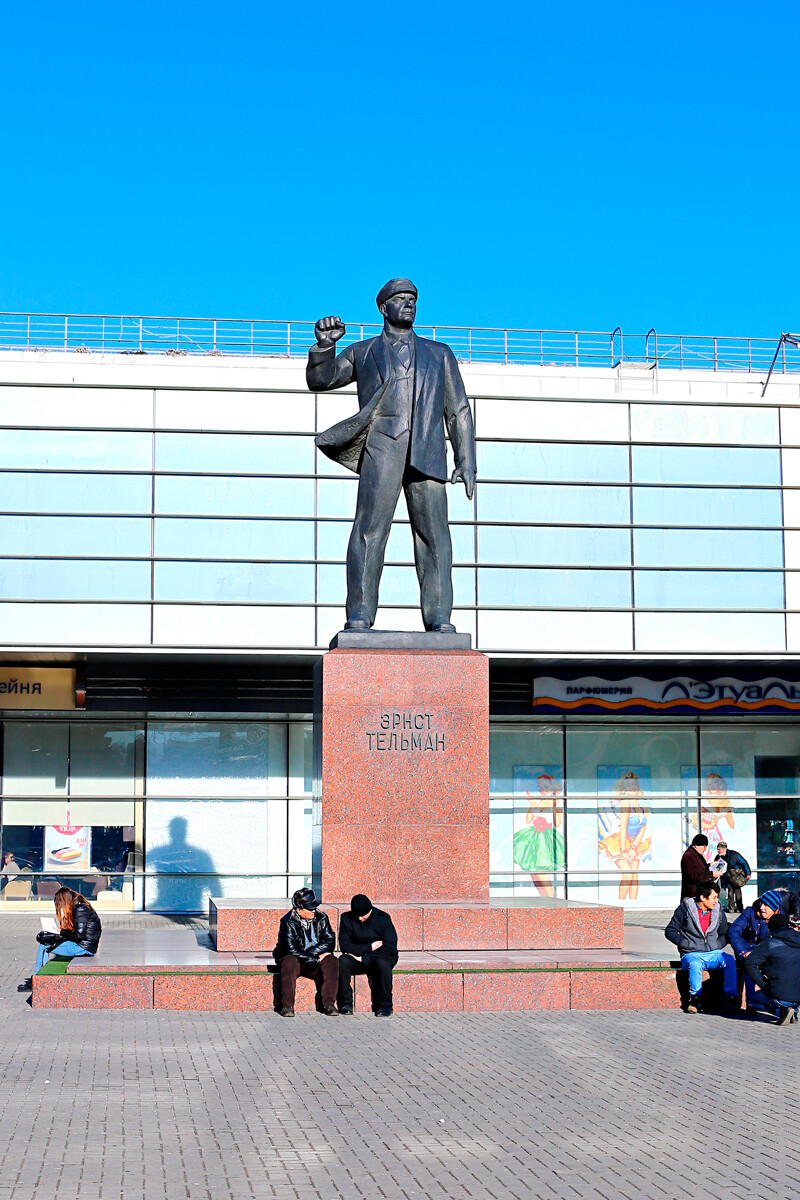
“Ernst Thälmann, once an honorable deputy of Mossoviet, from now on is forever a Muscovite,” Mikhail Gorbachev said, speaking in 1986 at the opening of the monument to Thälmann in Moscow. In its pose and look, this monument reminds one of the Lenin monuments that personify the image of the leader of the proletariat. A German delegation headed by Erich Honecker participated in a celebratory event dedicated to the 100-year anniversary of the communist politician’s birth. Thälmann’s daughter, Irma, was also in attendance.
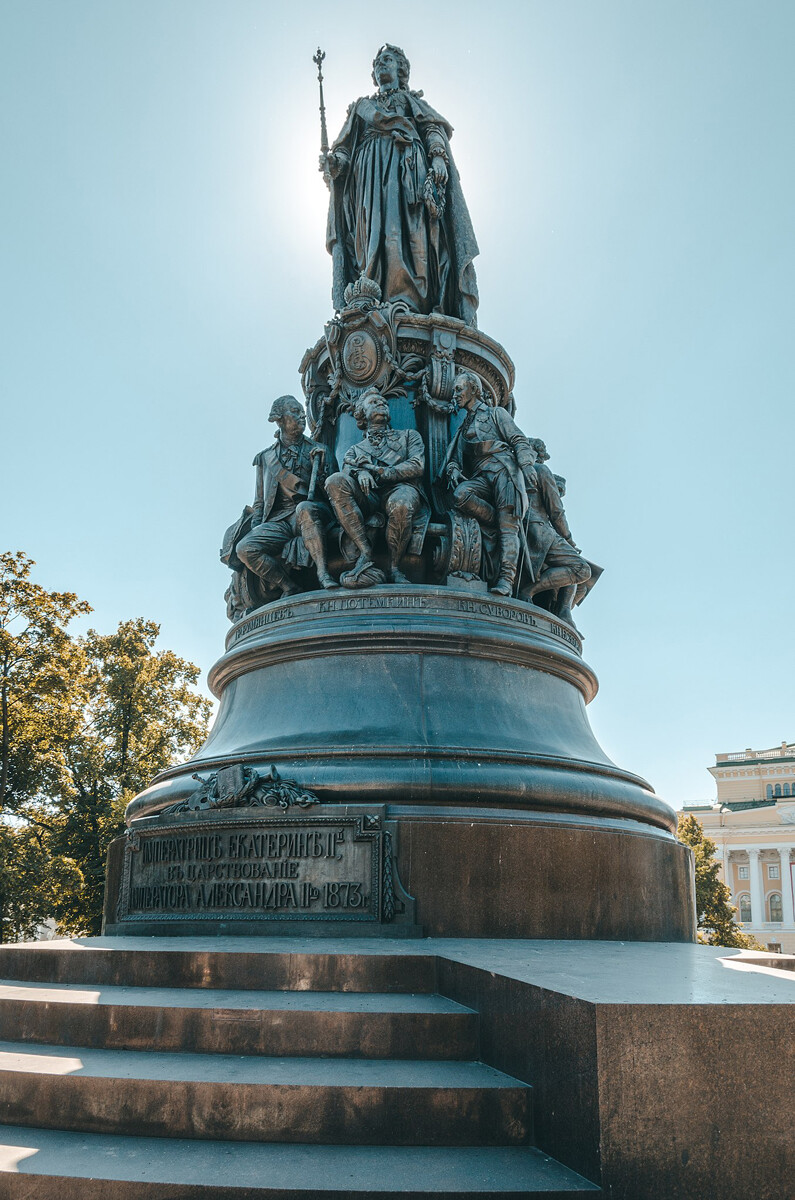
She was a daughter of the ruler of one of the German principalities and became the most important Russian empress. Catherine II went down in Russian history as “the Great.” Various regions of the country have monuments dedicated to her. One of the most impressive and largest, created in the 19th century, is located in downtown St. Petersburg, which was the country’s capital during the imperial era. Statues of prominent imperial era political figures – military men and educators - surround the pedestal upon which Catherine the Great stands. The monument is shrouded in legend: there are rumors that the jewelry of several court ladies is buried under the monument’s foundation. Adventurers are drawn by the monument itself, and quite often little details have gone missing – such as military orders, rapiers, and chains.
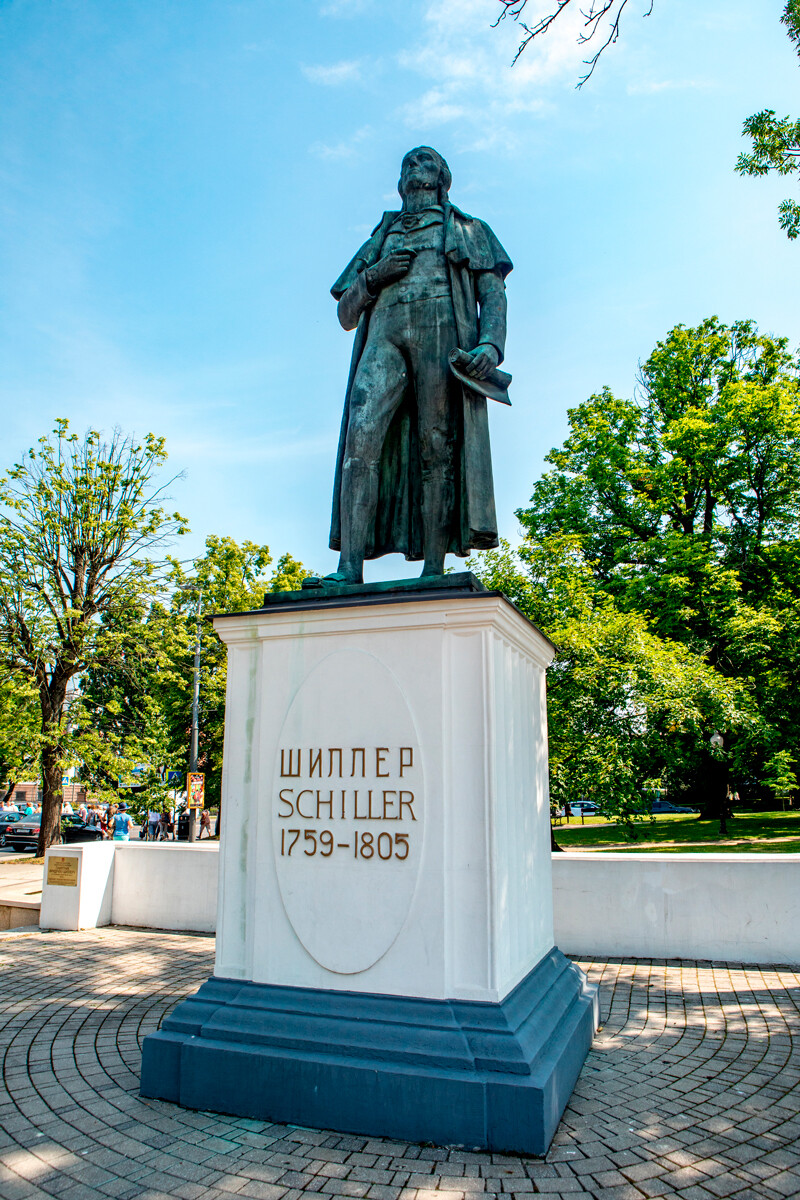
Kaliningrad has a monument to the German Romantic writer Friedrich Schiller. It was erected in 1910 when the city still bore the name of Königsberg. German sculptor Stanislaus Cauer was the author. Surprisingly, Schiller himself had never been to this city. The monument’s installation has to do with the opera theater building that towers opposite the poet’s figure. Schiller’s “William Tell” was the theater’s first play. The locals have always treated the monument with warmth and respect, and they still agree to meet each other “next to Schiller.”
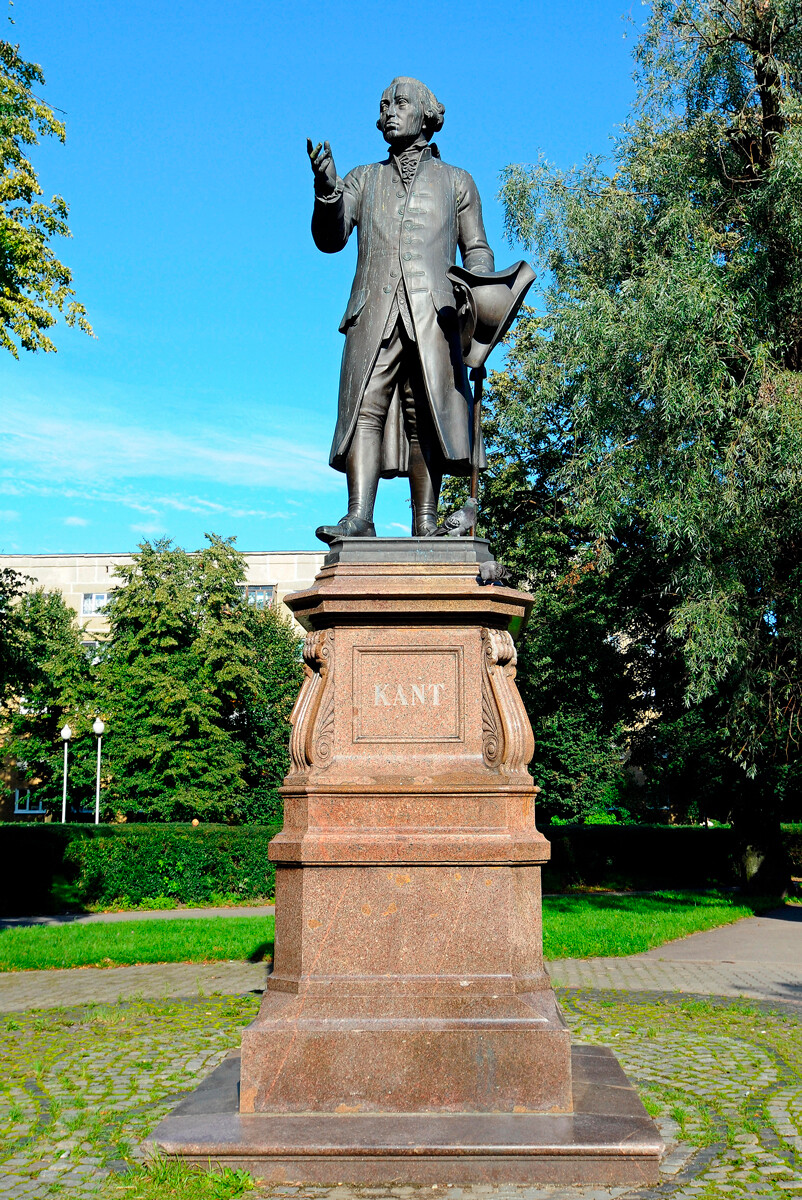
Kaliningrad-Königsberg was the birthplace of philosopher Immanuel Kant. In 1864, not far from the house where the thinker spent his last years, a monument in his honor was erected, but it had a very sad fate. During World War II, the monument was hidden in a wooden box and buried underground to save it from destruction, but then it was forgotten. Several years later, a monument to another German – Ernst Thälmann – appeared on its pedestal. However, some people dreamt of finding the old monument, which was also made by famous sculptor Christian Rauch. The attempts were fruitless, and as a result, the monument was restored according to the materials originally used by its first creator. The statue was given its former pedestal and installed in a new location.
Although a fairy tale writer, Hoffmann was born, studied and authored his first literary works in Königsberg. The city had no monuments to the writer until recently. In 2021, thanks to local activists, a bronze bust of Hoffmann was cast in St. Petersburg, and then was brought to Kaliningrad and installed in a local museum. The funds to create the monument were donated by Kaliningradians themselves in order to honor the memory of their famous fellow townsman.
There’s a monument to another great German writer — Heinrich Heine — in the yard of the Moscow Library of Foreign Literature. A commemorative inscription is engraved on its pedestal, “The gift of Dusseldorf of North Rhine-Westphalia in the memory of the signing of the Partnership agreement with the capital of Russia, the city of Moscow, on June 1, 1992.” This is not the first monument to Heine in Russia. In the beginning of the 20th century, two monuments were installed in his honor – in Petrograd and in Moscow. Both survived only for several years, slowly falling into ruin because they were made of gypsum.
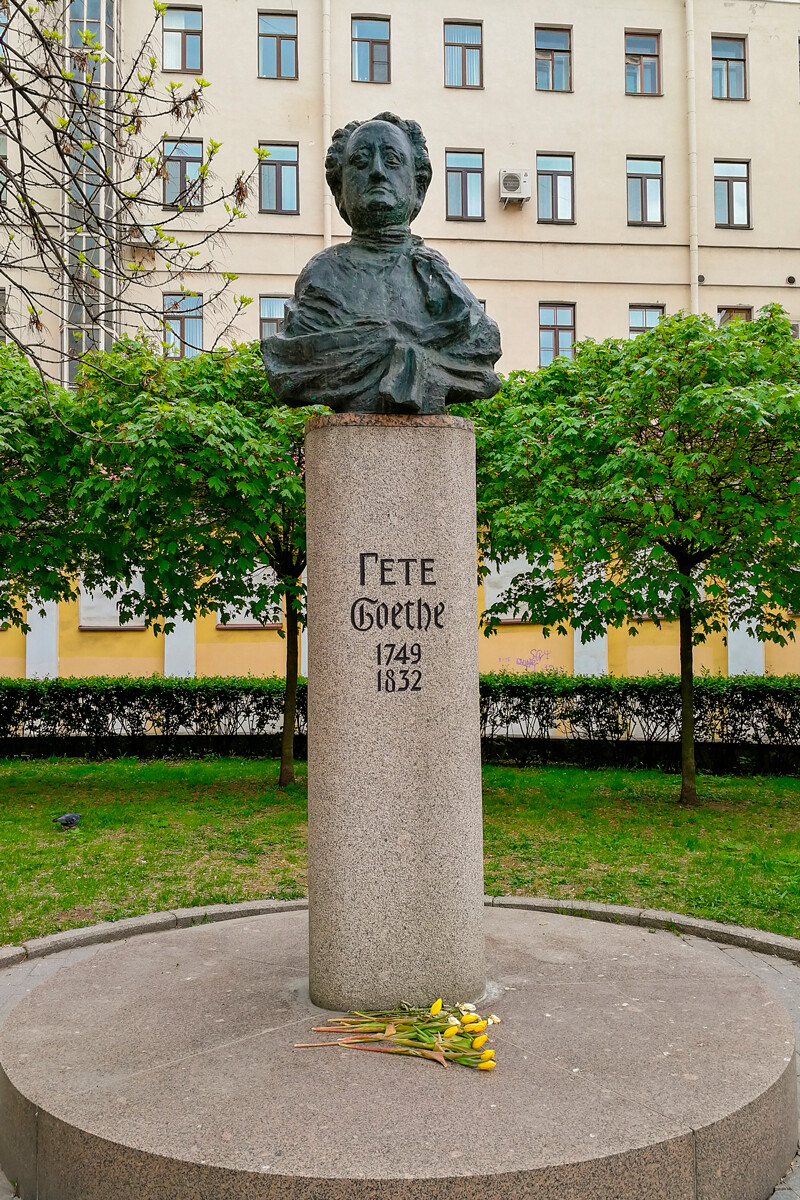
On Nevsky Prospekt, the main street of St. Petersburg, a bust of one of the greatest German writers, Goethe, stands in the yard of the Lutheran Church of Saint Peter and Saint Paul. The famous writer was interested in Russia’s culture and history, and he visited the country several times and was acquainted with members of the imperial family. Installed to commemorate the writer’s great talent, the bust was made based on Goethe’s death mask, which was brought from Germany specifically for this purpose.
Opposite the Goethe bust stands a bronze portrait of another German, also a man of the arts – composer Johann Sebastian Bach. The memorial was made by the same sculptor who made the one to honor Goethe – Levon Lazarev. He finished this work literally a week before his death. The unveiling took place in 2019 – exactly 20 years after the unveiling of the monument to Goethe. Bach himself had never been to St. Petersburg, although Empress Anna invited him to the court. However, the composer stopped touring after the death of his wife.
Dear readers,
Our website and social media accounts are under threat of being restricted or banned, due to the current circumstances. So, to keep up with our latest content, simply do the following:
If using any of Russia Beyond's content, partly or in full, always provide an active hyperlink to the original material.
Subscribe
to our newsletter!
Get the week's best stories straight to your inbox